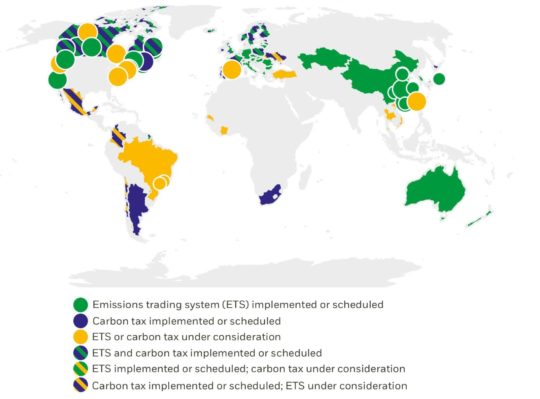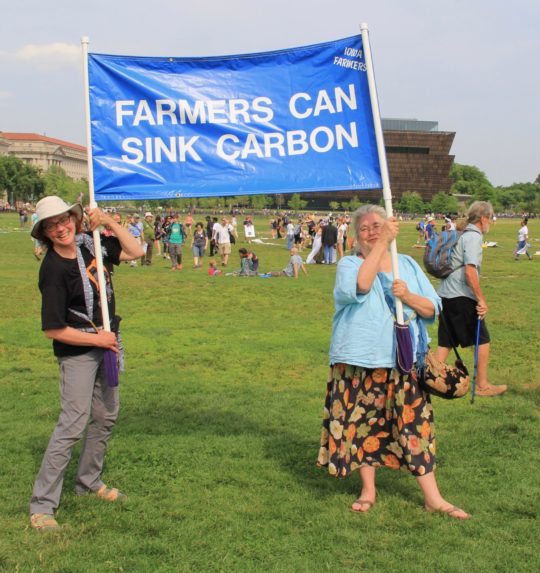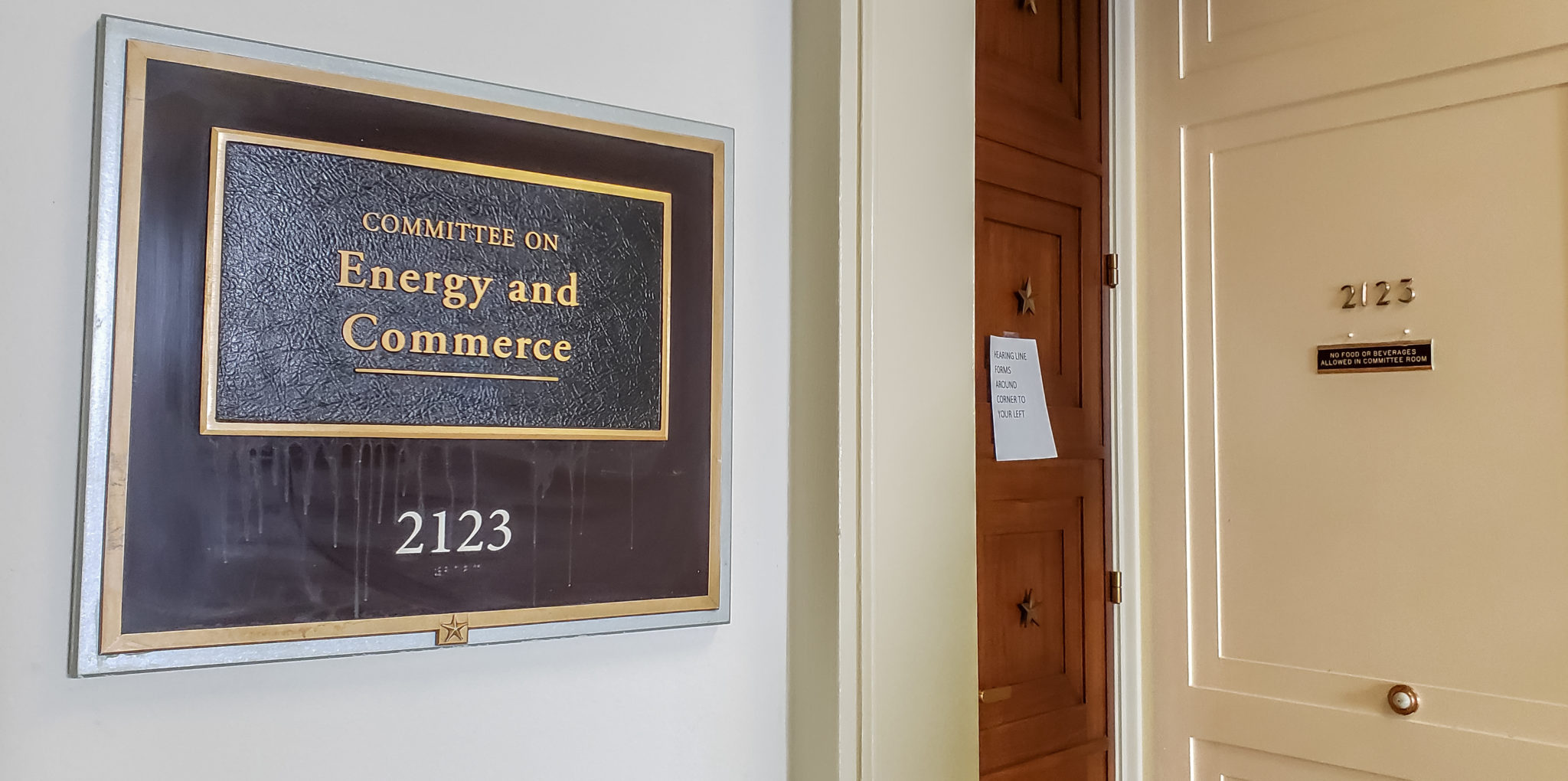Behind the Scenes, Federal Carbon Policy Is Beginning to Take Shape
Optimism lies beneath the cynicism in the nation’s capital.
It’s a grim picture: scientists warn that the world has a dozen or so years to act to keep climate change in check before the impacts become more extreme and much harder to mitigate.
This daunting reality, laid out in the United Nations’ Intergovernmental Panel on Climate Change fall 2018 report, is often compounded by the media. Headlines proclaim insurmountable political divisions at the federal level, and coverage ping-pongs between the Green New Deal and President Trump’s dismissive tweets about the weather.
The current echo chamber can impart a sense of hopelessness, but if you divert your attention from this institutional cynicism to look at what is happening below the surface, there is cautious optimism, and a path to federal carbon policy is beginning to form.
To be sure, policy that will regulate and put a price on the discharge of carbon into the atmosphere is still a few years away, but the ongoing work to lay the foundation for such a major rulemaking is crucial—especially for a proposal that will impact the entire global economy.
If you divert your attention from the institutional cynicism to look at what is happening below the surface, there is cautious optimism, and a path to federal carbon policy is beginning to form.
It Feels like Déjà Vu All Over Again
The Beltway conversations happening today feel vaguely reminiscent of the last time there was momentum behind a national clean energy policy framework. In 2008–2009, the strategy centered on cap and trade, a mechanism that sets an overall cap on carbon emissions through a tradable market structure. The left-leaning policymakers and organizations who developed the legislative concepts aimed to secure at least one Republican sponsor to embrace them—an insurmountable feat at the time.
Ten years later, cap and trade is one of several policy options being discussed among lawmakers and organizations. The key difference between then and now: Republican policymakers and right-leaning NGOs are an active part of the conversation.
Newly formed organizations such as the Climate Leadership Council (CLC) and the Alliance for Market Solutions (AMS)—both established to tackle climate issues through federal policy—are providing an important voice in this bipartisan dialogue. AMS has prioritized a carbon tax, which it views as the most conservative approach to addressing climate change.
CLC has embraced a carbon dividend, which would tax greenhouse gases and provide taxpayers with an annual payment to offset higher electricity costs.
CLC created a first-of-its-kind group, Americans for Carbon Dividends, to help build Republican support and to lead direct lobbying efforts.
The leadership of both these organizations includes former Republican members of Congress, Hill staffers, and other conservative influencers who recognize the urgency of addressing climate change. Beyond developing bipartisan policy concepts, the groups have created a path for Republican lawmakers to engage with and work on the issue.
Summary of Global Carbon Pricing Initiatives, 2019

No longer are Silicon Valley tech firms the only ones leading the charge; now, traditional consumer brands are stepping up to the plate.
Businesses have also joined on to support these efforts. No longer are Silicon Valley tech firms the only ones leading the charge; now, traditional consumer brands—and even some major oil companies—are stepping up to the plate. Although their support has been greeted with some skepticism, the takeaway of note is that these traditional “oil majors” are forward-thinking enough to know carbon regulation is imminent—and they want a seat at the table to help craft it.
Of course, there are myriad and nuanced steps between here and there. Transmission, for example, is a key component to any infrastructure package and would help speed the transition to clean energy, particularly if the investment were at scale, as during the mid-twentieth century. A new transmission buildout is a catalyst to deliver significant new wind resources to load centers across the United States—a true game changer. An infrastructure bill with a significant transmission component could serve as the down payment toward a federal climate bill.
Pricing carbon in wholesale markets, an emerging conversation led by the New York Independent System Operator (NYISO), will require careful consideration to appropriately value renewable resources, protect ratepayers, and establish long-term market stability. In most cases, these concepts will require engagement and approval from the Federal Energy Regulatory Commission (FERC)—and could create further momentum for national action.
Thinking Beyond a Carbon Tax or Dividend
The number and scope of organizations now engaging on the issue, paired with current market conditions, means elected officials have an even broader range of policy proposals that could adequately address the climate crisis. While some are working toward a carbon tax or dividend, or revisiting cap and trade, others are preparing legislation to enact national renewable energy standards. Still other groups are working on a proposal for a “technology neutral” tax credit tied to a power generation source’s emissions profile. Some of these ideas are being discussed in combination—a move that would further accelerate the transition to renewable energy.
Two significant proposals to keep an eye on are Senator Tom Udall’s (D-NM) national renewable energy standard and an initiative led by Senator Tina Smith (D-MN) and Congressman Ben Ray Lujan (D-NM) to establish a national clean energy standard. The latter would allow natural gas to qualify on a sliding scale. Udall’s proposal would establish a goal of 50% renewable energy nationally by 2035, and the Smith-Lujan proposal sets a goal of an 80% reduction in emissions by 2035 and net-zero emissions nationally by 2050. Senator Mitt Romney (R-UT) is also leading efforts within his caucus to coalesce around a suite of policy options to address climate.
As these and other carbon reduction bills start to take shape, action in key committees—House Energy and Commerce, House Ways and Means, Senate Energy and Natural Resources, and Senate Finance—to debate and refine these concepts will be watched closely.
Although it’s easy to become discouraged by the news cycle harping on dysfunction in our nation’s capital or the latest extreme weather event exacerbated by climate change, the current work happening under the surface is already accelerating the process in a meaningful way. It’s still too early to gauge which policy option will ultimately win the day, but there’s now reason for optimism. The efforts under way today will take us where we need to be tomorrow.

(Wikimedia Commons)
